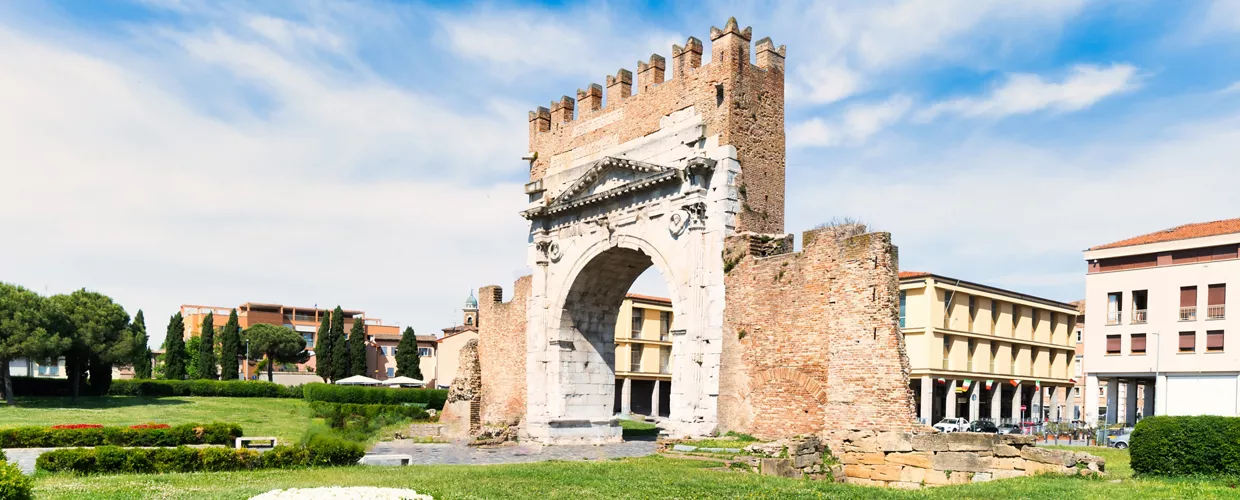This content was automatically translated. View the original text.

Overview
Known as the oldest Roman honorary arch, dating back to 27 BC, the Arch of Augustus of Rimini marked the end of the Via Flaminia which connected Rimini to Rome and, together with the Tiberius Bridge, is one of the symbols of the city. Originally part of the city walls, traces of which remain on the lower flanks, today it appears as a 17-metre-high isolated travertine triumphal arch.
As far as the decorative apparatus you can see in the centre of the fornix, on the outer side, the head of a bull under the toy, symbol of fertility on the one hand, but also of Augustan power on the other. On either side of the archway, between the Corinthian capitals and the arch lintel, are four clypeus, or round shields depicting Apollo, the deity who led Octavian Augustus in the victorious battle of Actium against Antony and Cleopatra, Jupiter, recognisable by the presence of a bundle of lightning in the frame, Rome, in the female personification with armour and sword, and Neptune with trident.
The terminal decoration, above the gable, was probably destroyed, and was rebuilt in the 10th century with a Ghibelline crenellation of medieval brick taste. Here, part of the inscription with the dedication to the 'commander Caesar Augustus'.